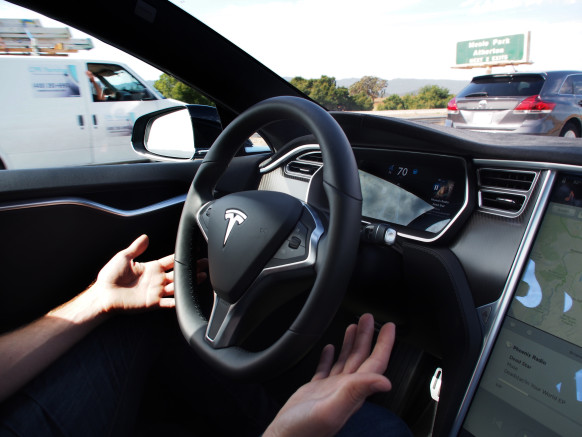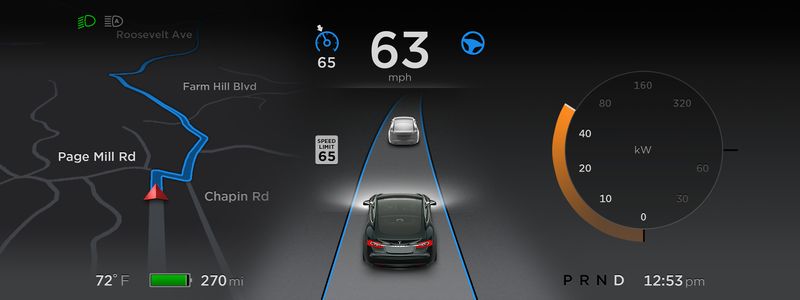
My super sweet ’05 Toyota Corolla LE does not get new features over the years (trust me I’ve checked), but that’s not necessarily true for all cars. Over the last week, Tesla Model S owners woke up to a software update that added a few new features for the all electric vehicle. The 7.0 update included a new design for their clock, a more comprehensive data display, and of course a semi-autonomous driving mode. Now, if you’re from the future (which I hope you all are) where self-driving cars are a normal thing then you won’t be impressed, but if you’re from present times, then I think your interest may have piqued just a bit. Normal boring Tesla’s suddenly became way, way cooler.
Functionality

Software update 7.0’s key feature is called Auto Steer in which the vehicle will drive and monitor itself (speed and distance from other cars) once the vehicle is already on the road and has reached at least 18 mph. Tesla very explicitly describes this as a beta feature as you will need some part of your hand or finger on the wheel while this is active. When the Auto Steer feature is on the car will alert you if you have your hand off the wheel for too long and any resistance to the car’s autopilot maneuvers will result in the driver getting control of the car again. Another new feature is Auto Lane Change where the driver simply clicks the turn signal in the direction it wants to change lanes to and the car will automatically adjust speed and turn by itself. Now this does not mean you can blindly change lanes, you must check your blind spots before telling it you want to change lanes. However, even if you accidentally forget to check your blind spots, the car will check your blind spots for you and make sure the lane change is safe. So yeah, not autonomous but close enough! Now before all you Model S (and soon Model X) owners go out on the roads, please be advised that this is for highway use only where things are more predictable. It cannot stop for a stop sign or red light on the streets. You still have to use your brain for things like that, for now.
Making Sense of Sensors
Now a term I have grown to love is “sensor suite” (cough cough Brian) because what it basically means is a whole bunch of sensors giving data to a command and decision type brain or logic function which will activate certain actions (break, speed up, slow down, turn, reverse, park, etc) according to the data received. The sensor suite on newer Model S and Xs are a front facing radar, forward facing camera with image recognition capability, 360 degree ultrasonic sonar, and GPS data on the vehicle. That’s a lot of data. A lot of real time data that must be filtered, analyzed and assessed. So in all honesty, Tesla must have worked out all these system engineering issues for years to even consider releasing this to the public because no company would do this simply for the liability risk. Even with the sensors on board current Model S and Xs, Tesla says the fully autonomous vehicle will need a more comprehensive sensor suite. They say they can do it in 3 years. I say bring it.
Thoughts
Now when founder of Tesla Motors Elon Musk announced this new update for newer Tesla Model S and Xs, he jokingly anticipated that the upcoming 7.1 update will have the ability to make the car go park itself in a garage and come pick you up when you’re ready. Now most of the time I would interpret this as a joke but now I’m not so sure. This has been the most aggressive leap forward to the fully autonomous car ever. Truly impressive work. Now does this mean that autonomous cars and robots are just around the corner? Time will only tell.

